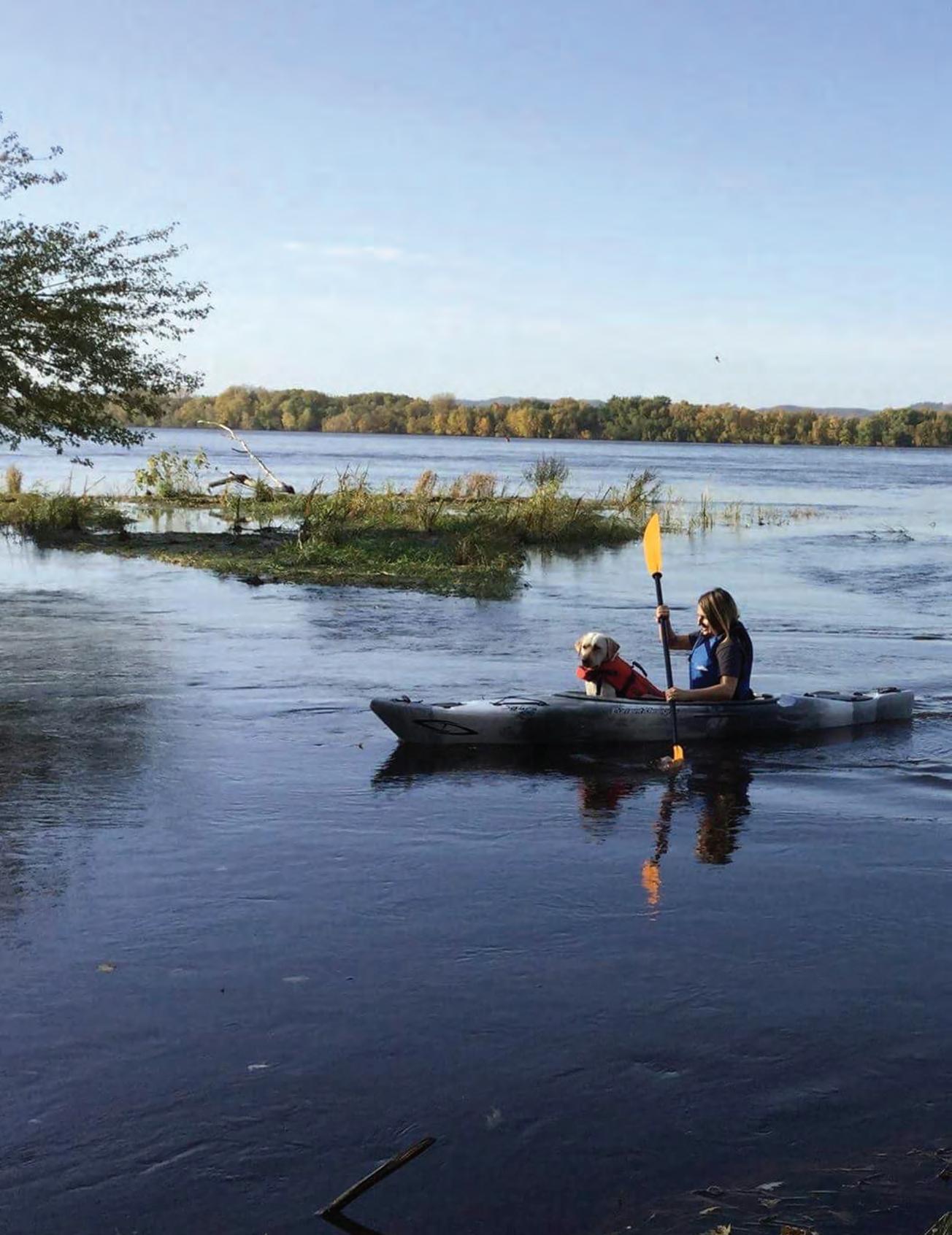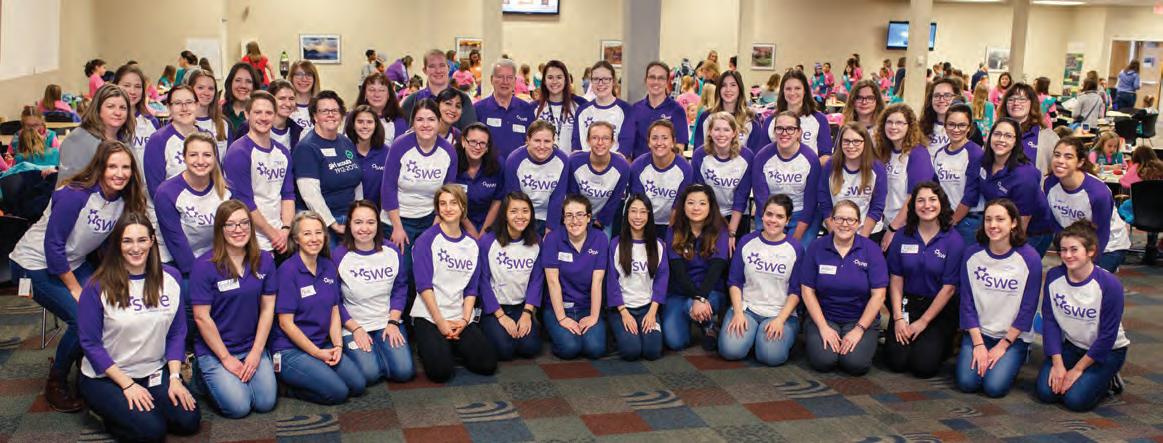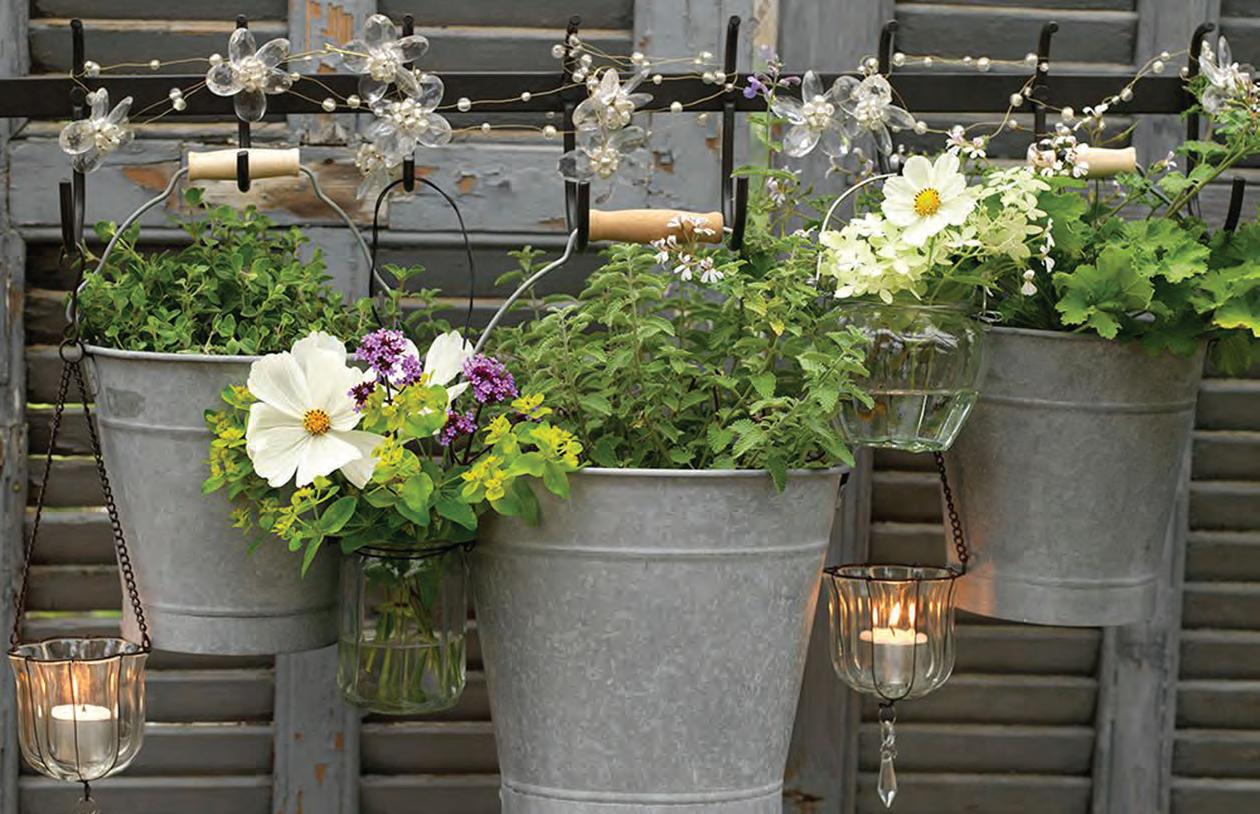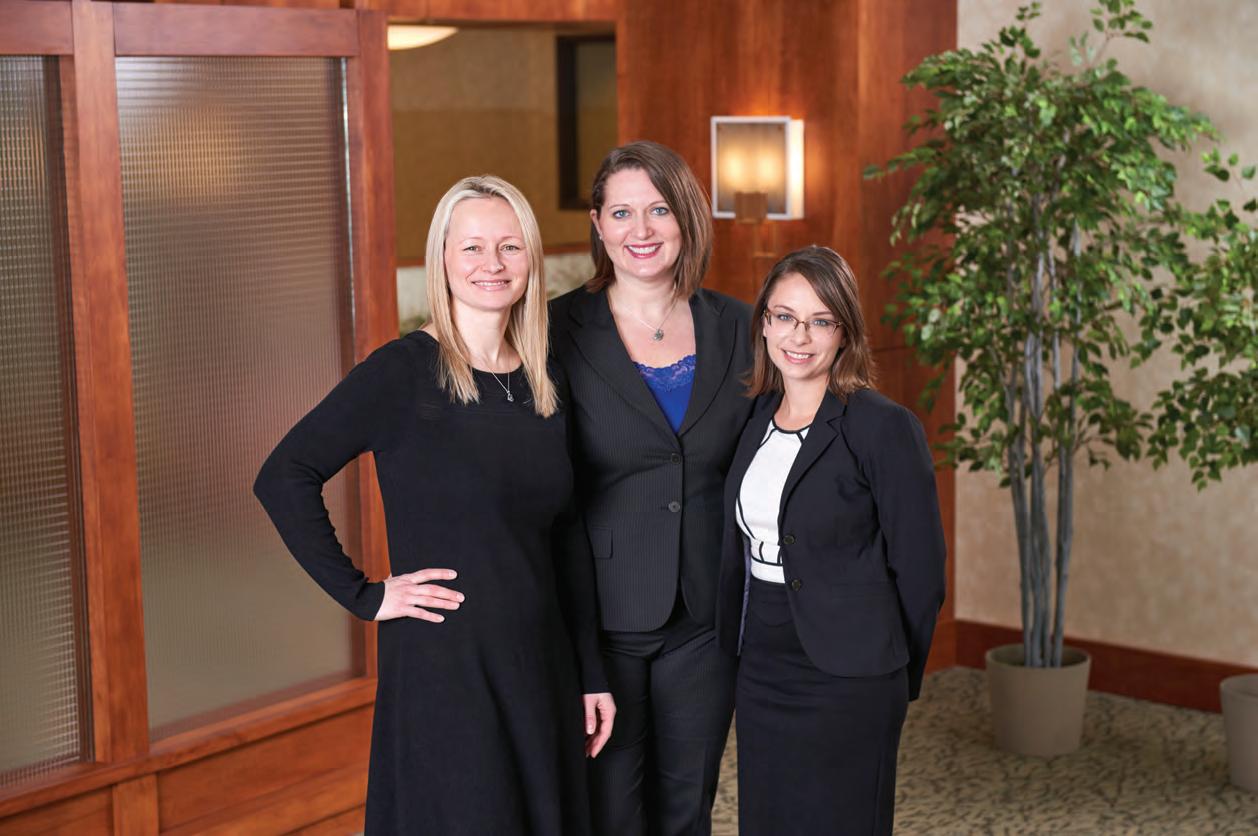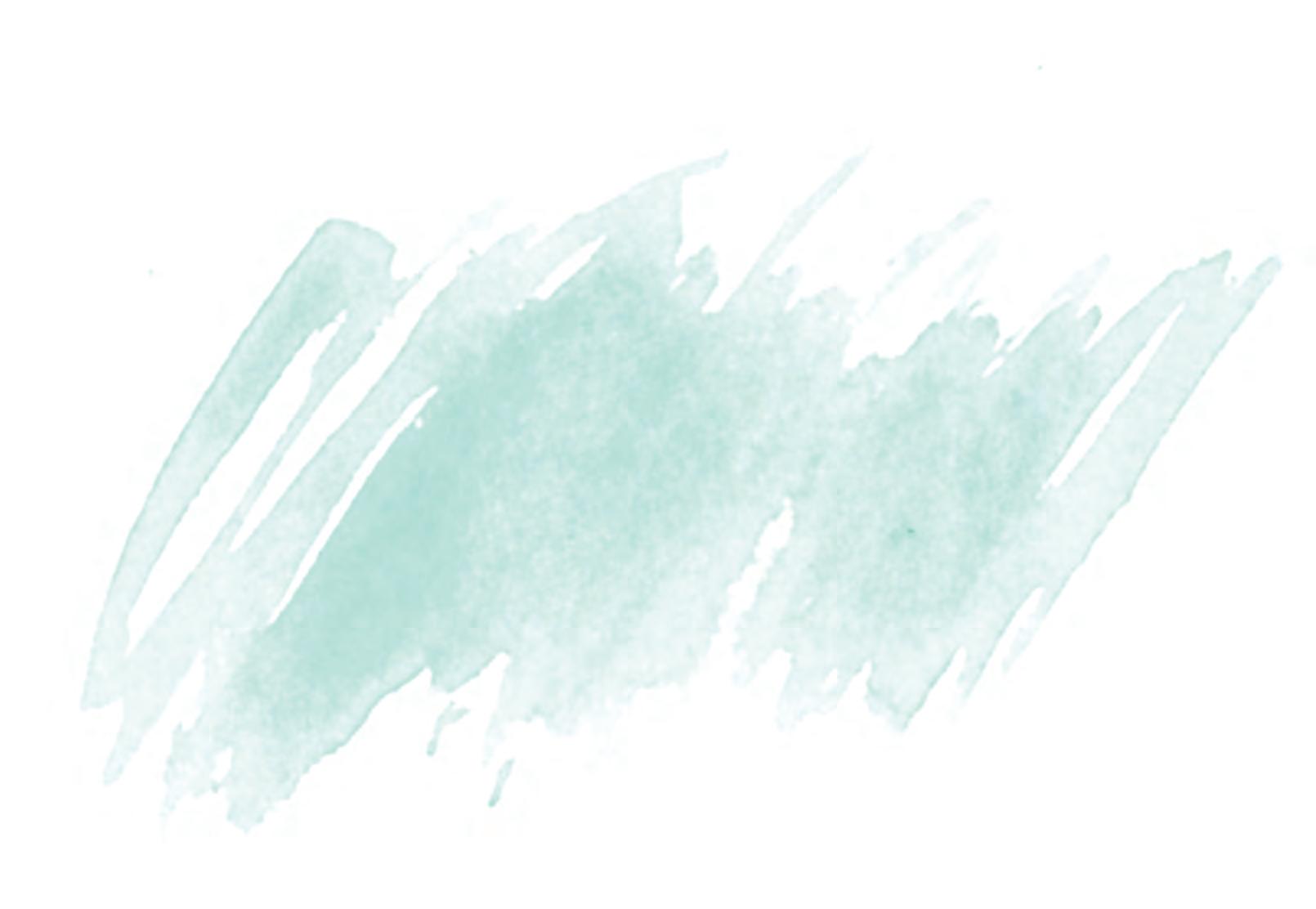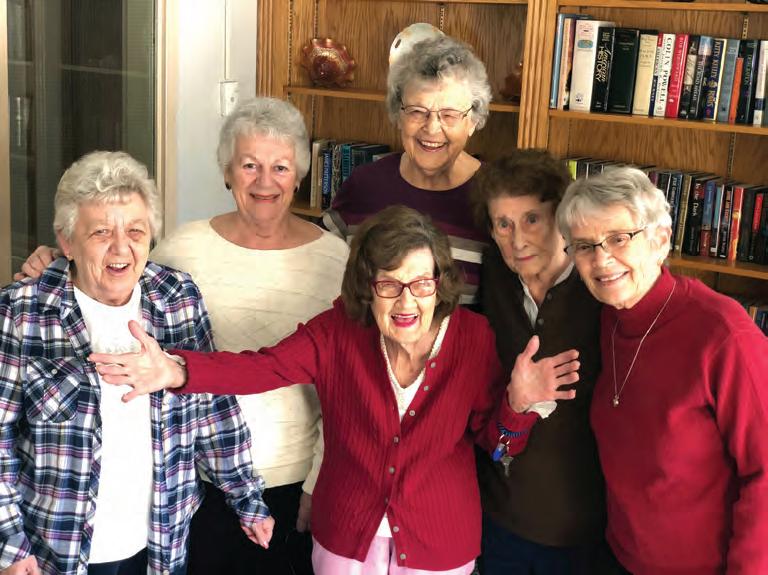
15 minute read
A Passion for the Arts
A Conversation with Noelle Lawton
CityArt Walking Sculpture Tour, Towards Tomorrow by Tommy Riefe, Photo credit Gregg Andersen
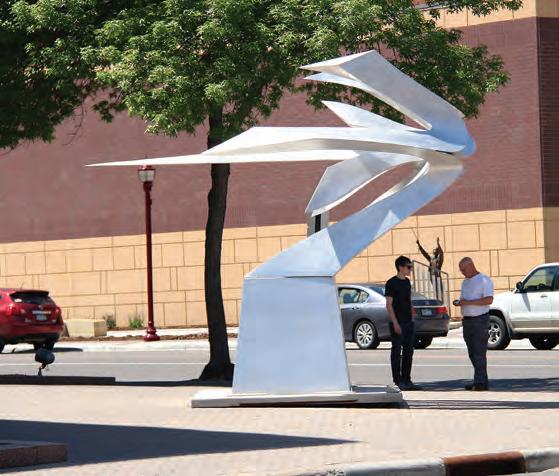
Noelle Lawton, self-professed theater geek, never imagined herself as director of a regional arts movement despite her love for the creative fields. The Mankato native originally left the Land of 10,000 Lakes at 18 to pursue a career on the stage. “I had aspirations of being an artist,” Lawton said. “I studied that and stuck around the Chicago area for about 15 years.” Lawton was fascinated by the arts movement in Chicago and enjoyed the cultural exposure she found during her stay. When she moved back to Mankato with her husband and two kids in 2009, she was surprised to discover that a similar arts movement was brewing on a smaller scale in Southern Minnesota. Even better, the movement was welcoming any and all volunteers with heartfelt enthusiasm.
“I found when I came back that it was really easy to get involved in Mankato,” remembered Lawton. “(In) such a large urban area (like Chicago), I think there’s a lot of barriers. That’s what was so awesome about coming back to a smaller community. Any effort that you made, people were so thankful [for].” Thanks to Mankato’s tight-knit community, opportunities to get involved in multiple arts initiatives were plentiful. When Lawton started working part-time for community theater organization Merely Players, she heard about a collaboration happening between the City Center Partnership and the newly-founded, Twin Rivers Council for the Arts. The groups were working to spearhead a new Sculpture Walk program in Mankato’s downtown area that would feature a new display of sculptures by local artists every year. One of their key leaders had left just as the project was making headway and the organizations were looking for a By Katie Roiger
Silo Art Project, work in progress, by Guido Van Helten, Photo credit Sara Hughes.

replacement.
“I just kind of raised my hand and said well, that sounds like fun!” Lawton laughed. Ten years later, the Walking Sculpture Tour is a much-visited local attraction, complete with a self-guided audio tour and a voting process for which sculpture will be purchased for permanent residence by either Mankato or North Mankato. It is responsible for the giant Godzilla statue on the North Mankato side of Veteran’s Bridge and countless happy memories for residents and visitors alike. Lawton has been an active for ce behind the Sculpture Tour ever since her first experience with it. After working for the City Center Partnership for a few years, she applied for and received the role of Director for the Twin Rivers Council for the Arts. “When the director position opened up at Twin Rivers, I thought, you know, I’m more passionate about arts and culture and it’s a bit more in my wheelhouse than urban planning,” Lawton said. Lawton feels incredibly lucky to have been part of local artistic initiatives from painting original artwork on city utility boxes to commissioning the ongoing silo art project in partnership with Ardent Mills. “It’s an idea that we had floating around for (about) six years,” explained Lawton. “We’re always looking around at infrastructure within the city center and looking for ways to reimagine it, to be a draw to bring people downtown.” Twin Rivers chose internationally recognized artist artist Guido Van Helten to create a giant mural celebrating regional heritage on the side of Ardent Mills’ silos. The mural,

overlooking the Minnesota River, is often the first view travelers have of Mankato. “What the artwork and pr oject represents is key to the values of Twin Rivers,” Lawton said. “We really see ourselves as a creative visionary. We want to do things that bring joy to people.”
Lawton herself finds joy in being able to support local artists, particularly other women. Twin Rivers helps local craftspeople and cultural influencers to receive recognition and support from their community. “It’s traditionally women who are the major supporters of arts and culture,” Lawton said, referencing the local institution Singing Hills Chorus, a choir that provides a creative outlet for persons with Alzheimer’s and other dementias. Program director Sandi Lubrant and music director Kristin Ziemke’s stated goal on Singing Hills’ website is that each and every chorus member finds joy through artistic expression. “It’s this cool initiative that’s bringing community members together,” Lawton said. “They’re having tremendous success right away, and everyone looks like they’re having such a good time!”
Lawton loves seeing cr eative movements by people such as Van Helten, Ziemke, and Lubrant, especially in light of the impact that art has had on her personally. Although she feels she is naturally an introvert, her devotion to theater drew her out of herself and into the experiences of others in a profound way – a phenomenon she thinks is true of any art form and an important part of any community’s culture.
“One of the things I’ve really taken away from working in the arts here in Mankato is that you are meeting so many different people from all walks of life,” Lawton said. “There’s this universal language that we all speak when we have a passion for the arts. That’s the beauty of it.” Katie Roiger is a freelance writer who works out of the greater Mankato area. She enjoys exploring every town she visits and knowing where to find the best Italian restaurant in any 40-mile radius. Movers & Shakers panel discussion 2019, Photo credit Melissa Ketchum.
Girl Scouts & STEM Making Changes Loc all y & Gl oball y

Juliette Gordon Low and her first Girl Scouts of the USA blazed trails in 1912. In a time when women and girls were expected to cook and clean and tend to children, Low and her Scouts were hiking, camping, swimming, learning about the stars, and playing basketball. They were sharing adventures, learning that girls can do anything, and helping those in need around the world. Juliette and her girls may not have known it then, but they were also blazing trails in STEM (Science, Technology, Engineering, and Math). Today’s Girl Scouts are carrying on the mission to “build girls of courage, confidence, and character, who make the world a better place.” The local council is Girl Scouts River Valleys, which serves more than 28,000 girls in By Julie Buchwald Haley Under the Space Shuttle.
partnership with 9,000 committed volunteers and adult members throughout 49 counties in southern Minnesota, western Wisconsin, and one county in northern Iowa. Scout tr oops in Northfield have concentrated on STEM learning and projects for about the past 20 years. Part of being a Scout is learning about and trying new and varied activities to earn badges and awards. Some activities include taking trips to STEM-centric locations such as River Bend Nature Center, Prairie Island nuclear power plant, Xcel Energy, the wind turbines at St. Olaf College, and a military base. During a trip to Goodsell Observatory at Carleton College with former troop leader Debby Walser-Kuntz, a biology professor at Carleton, the girls learned about both historic and modern telescopes, identified stars and constellations, and worked on asking thoughtful questions.
“When we left the Observatory and looked up to the night skies, we identified Northern Lights,” Debby said.
Many of the Scouts have made trips outside of Minnesota to places like Huntsville, Ala., and the U.S. Space Camp on the grounds of the U.S. Space and Rocket Center museum. They learned about space exploration, aviation and robotics, sat in control rooms, took space walks, visited an International Space Station, built parachutes, and walked under a space shuttle. They also enjoyed meeting Robert “Hoot” Gibson, the pilot and astronaut who commanded the crew of the first Space Shuttle to dock with the Russian Space Station Mir, and who was the first person to shake hands with Russian astronaut Vladimir Dezhurov when the doors between the stations were opened.
Another memorable trip took them to Costa Rica, where they camped, backpacked, and studied mangrove forests along the Pacific
Butterfly Garden at LB S.
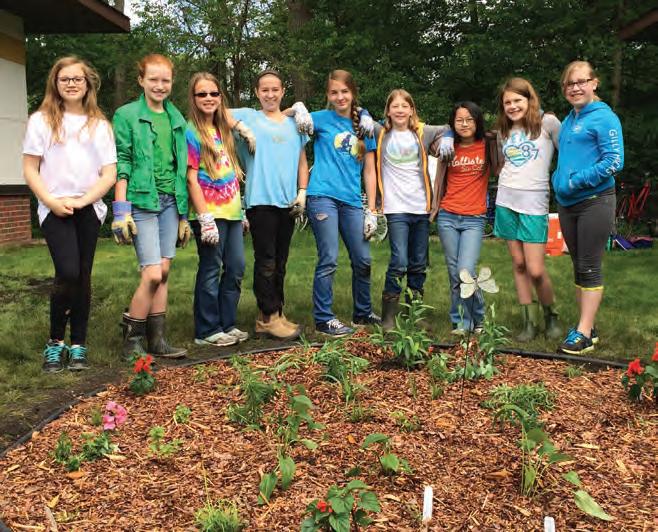

coast. Mangroves are filtration systems that protect coasts and habitats from erosion and are critically important to Costa Rica’s environment. The Scouts helped collect and plant seeds while working in a mangrove nursery – a large pit with seedlings of various ages exposed to the extreme ocean tides. Part of the work included planting seeds in recycled containers, packing them in with ground soil, then planting the entire unit in the nursery. Studies show that girls become interested in STEM subjects around the age of 11, but often lose that interest when they’re 15. Research also shows that girls prefer subjects where they can see the impact they are making in the world. So, during these formative years, the Girl Scouts program encourages girls to be empowered to think about how STEM subjects and activities can change the world. They are learning to be both good students and good stewards of our world.
When Scouts Ainsley Nutt and Jeanette Pelletier, both 16, talk to peers about making a difference in the world, they speak from experience. Jeanette’s Gold Award project will take her to Tbilisi, Republic of Georgia, this year. She’s working on raising awareness about vision loss and creating sister schools between the Minnesota State Academy for the Blind and a school in Tbilisi. Ainsley’s Silver Award project included rescuing more than 1,200 beginner reader books from a recycling bin, then organizing and delivering them to a youth center in the Dominican Republic. The Scouts are gaining skills and experience in communication, organization, time management, fundraising, diversity, and travel, all of which translate to a wide variety of careers. They’ve also worked on local projects including building and maintaining a butterfly garden at the Laura Baker School and planting trees at the Carleton Arboretum. “It’s pretty amazing when I realize I’m making a difference, not just talking about it,” Jeanette said.
Part of the work the Scouts do all year long is fundraising. Each spring, it’s Girl Scout Cookies time, a program that started in 1917 by Girl Scouts and their moms as a way to fund their activities. It has steadily improved and increased since then to become a major fundraiser for many troops across the country. Seventy-six percent of proceeds goes to the troop itself, with 24% going to the Cookie program and bakers’ costs. Selling cookies helps the girls develop important skills in communication, math, and organization. And it helps to ensure that trips can be made by any Girl Scout interested in participating.
Cookie sales also help girls develop lifelong friendships. “We love that all the girls want to spend time together,” Kelly Stanton-Nutt, mom to Ainsley, and Jenny Pelletier, Jeanette’s mom and Troop 25258’s leader, said.
One of the many benefits of Scouting is that girls feel that they have important, intelligent voices to be heard and considered. The Girl Scouts continue to encourage girls to become leaders across all subjects, helping them build courage, confidence, and character. And the Scouts are most certainly making the world a better place.
Julie Buchwald Haley is a freelance writer, new grandma, and PTSD survivor who works full-time, volunteers part-time, and is a pet parent to three. She returned to Minnesota after a 30+ year absence to make new memories with her parents. Jeanette & Ana. Planting in the Mangrove Nursery.

A few fa mous Girl Scouts: Sally Ride, astronaut and physicist Tammy Duckwort h, Senator (D-IL) and retired U.S. Army Lt. Col. Mae Jemison, engineer, physician, and former astronaut Eileen Collins, retired astronaut and U.S. Air Force Colonel Sandr a Day O’Connor , retired Associate Justice of the U.S. Supreme Court Janet Napolitano, attorney, university administrator, former U.S. Secretary of Homeland Security Madeleine Albr ight, former U.S, Secretary of State Condoleezza Rice, former U.S, Secretary of State Ger aldine Ferr ar o, attorney and first female Vice Presidential candidate representing a major political party Glor ia Steinem, journalist and social political activist Dr . Joyce Br others , psychologist and columnist Linda Chavez-Thompson, former President of the Trade Union Confederation of the Americas

Ancient Wisdom Modern Medicine meets
The Human Era is said to consist of the last 12,020 years, but illness and disease are as old as time. While much more recent medical history took us away from nature, medical research over the last 50 years is steering us back to our roots. Ancient Eastern medicine and wellness practices are now being integrated into hospitals and clinics across the country, all due to modern research. The way we test and follow up with patients has evolved, as well as how we research long term effects of certain drugs and treatments. Recently, “Time” magazine published a special edition on alternative medicine and expressed the relevance of these ancient practices that are re-emerging, with science to back it up.
Almost as though our body is a bio-machine that houses a conscious ness, our mindset around healing and the social support we receive can either assist in the process or hold us back. We are finding that psychological distress and fatigue can actually worsen symptoms of any disease. Unfortunately, it isn’t prevention that is turning most people toward alternative medicine. In 2016, the CDC reported that approximately 50 million Americans were suffering from chronic pain, and that U.S. deaths related to heart disease and cancer were on the rise. Rather than tr eat a series of symptoms solely with prescriptions and treatments that bear a host of side effects, science is now looking into avenues of healing that treat the whole human. So, what are these alternatives and how can they help? • Chiropractic Care – Considered a “manipulative therapy,” the National Institutes of Health has reported that approximately 30 million adults are receiving chiropractic treatment annually. Instead of using pharmaceuticals to numb pain and reduce inflammation, just a few weeks of chiropractic adjustments will address physical misalignments that cause pain and inflammation, or block energetic flow. • Massage Therapy – Often considered a luxury, massage goes handin-hand with other healing therapies. Touch therapy manipulates soft tissues and has a variety of benefits, including but not limited to lowering blood pressure, increasing production of endorphins and serotonin (natural mood regulators and painkillers), and lowering cortisol levels (the stress hormone). • Yoga – A practice dating back more than 5,000 years, yoga is a moving meditation that is also considered a low-impact form of exercise. It has been adapted to meet a wide variety of body types and ability levels. • Acupuncture – This healing technique is more than 3,000 years old and uses needles at different pressure points on the body; 361 points to be exact. This can be used to treat asthma or chronic pain, relieves discomfort from digestive conditions, boosts immunity, relieves headaches, and can also relieve allergies. By Rian Dicke-Michels
• Herbs and Teas – Every plant on this earth is unique in its own way. Each one has its uses, and modern-day herbalists are harnessing that power by creating tinctures, salves, teas, tonics, and other tantalizing products that heal, soothe, and ease. With their knowledge of the plant world, they are able to combine herbs that will cater to your individual needs. • Nature – It is common these days that people are unable to get outside as much as they should. In 2018, the National Health Service of Scotland began issuing “nature prescriptions” to treat mental health disorders. • Cannabis and CBD – This plant extract is growing in popularity now that it is widely accepted due to its healing properties.* Cannabis and CBD are being used in cancer patients, seizure sufferers, those living with chronic pain, even those diagnosed with anxiety/depression and ADD. (Source them responsibly.) • Spirituality – Belief in something bigger and greater than the Self doesn’t require us to follow any given faith, but having any sense of spirituality can increase mental/emotional health. • Gut Health and Food – Beyond satiating hunger, food provides the body with vitamins and nutrients. What we eat gets broken down and absorbed via the digestive system to be divvyed up throughout the entire body. Therefore, our gut health affects everything else. Meditation – As the saying goes, “Mind over matter.” Whether you meditate for relaxation, brain training, or reducing stress, it is a way to treat a number of ailments by using the power of the mind. Melding the Eastern and Western idea of health is, in my opinion, an intelligent and intuitive approach to the future of medicine. Where these alternative therapies were once considered “woo woo”, we are now learning how effective they can be in treating a variety of ailments. We are already encouraged to have regular visits with dentists and physicians, yet these other forms of healing are still considered “alternative.” Everything from immune health, gut health, mental health, and physical health are all tied into one another, and in an ideal world, our “treatment plan” could be both individualized and preventative. Who knew how innovative the ancient texts and traditions would be in the 21st century?
Ed. Note: A review of the latest research, published in September 2019 in Mayo Clinic Proceedings, finds there’s a growing body of preclinical and clinical evidence to suggest that CBD oils may hold promise for treating conditions such as chronic pain and opioid addiction. But few clinical studies on the safety and efficacy of CBD have been reported, and more research involving humans is needed before health care providers can say definitely that they’re helpful and safe, according to Mayo Clinic researchers. “There are many intriguing findings in pre-clinical studies that suggest CBD and hemp oil have anti-inflammatory effects and may be helpful with improving sleep and anxiety,” says Brent Bauer, M.D., an internist and director of research for the Mayo Clinic Integrative Medicine program. “But trials in humans are still limited, so it is too early to be definitive about efficacy and safety.”
A highly passionate woman and mother of two children, Rian Dicke-Michels is also an MSU graduate and 500RYT; a certification she received at the Green Lotus Yoga and Healing Center in 2019. Her education in psychology, experience as a yoga pracitioner, and the reality of raising small humans drives her to always be seeking new information. She is an advocate for nature, health, and wellness. “My life is a continuous journey towards healing and Self-love,” she says. “I am honored to be growing with you.”

